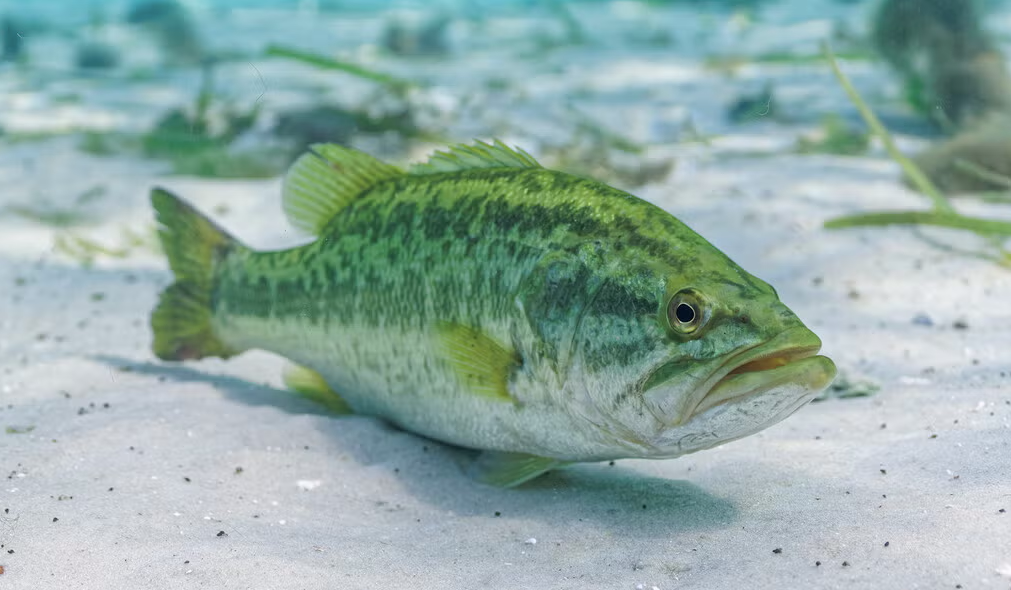
Here's How You Can Tell How Old A Largemouth Bass Is
Tackling The WaterShare

As an angler, one of the most intriguing things about catching a largemouth bass is wondering how old it is. Knowing the age of a largemouth bass can provide valuable information about its growth rate, reproductive potential, and overall health. In this blog post, we'll explore some of the most effective ways to identify the age of a largemouth bass.
Method 1. Counting the Rings on the Scales
One of the most reliable ways to determine the age of a largemouth bass is by counting the rings on its scales. The concentric rings on the scales of a largemouth bass represent its growth patterns, with each ring indicating one year of growth. To count the rings, you'll need a magnifying glass or microscope to get a closer look at the scales. The scales can be found on the sides and belly of the fish and are usually easy to see. Counting the rings can be a bit tricky, but with practice, you can become proficient at it.
Method 2. Examining the Otoliths
The otoliths are small, bone-like structures found in the inner ear of a largemouth bass. Similar to the rings on the scales, the otoliths have concentric rings that represent the growth patterns of the fish. To examine the otoliths, you'll need to remove them from the fish and use a microscope to count the rings. The otoliths can be challenging to remove, and the process requires a steady hand and a bit of patience.
Method 3. Using Length and Weight Data
Another way to estimate the age of a largemouth bass is by using length and weight data. Largemouth bass grow about 1 inch per year during their first four years of life, with growth rates slowing down after that. By comparing the fish's measurements to growth charts for the species, you can estimate its age. This method is not as accurate as counting the rings on the scales or otoliths, but it can still provide a good estimate of the fish's age.
Method 4. Checking the Condition of the Scales
The condition of a largemouth bass's scales can also provide clues to its age. Younger fish have smoother, shinier scales, while older fish have rougher, more worn scales. The scales of an older fish may also have more scratches and scars from fights with other fish or encounters with underwater structures.
Method 5. Examining the Fins
The fins of a largemouth bass can also offer insight into its age. Younger fish have more pointed and rigid fins, while older fish have more rounded and flexible fins. The fins of an older fish may also have more nicks and tears from wear and tear.
Method 6. Observing the Eye Color
The color of a largemouth bass's eyes can change as it ages. Younger fish typically have clear, bright eyes, while older fish have darker, cloudier eyes. The eyes of an older fish may also have more scars or damage from encounters with predators.
Method 7. Analyzing the Spines on the Gill Plates
The spines on the gill plates of a largemouth bass can also provide clues to its age. Younger fish have sharp, pointed spines, while older fish have blunter, more rounded spines. The spines of an older fish may also be thicker and more robust.
Method 8. Examining the Teeth
The teeth of a largemouth bass can also give you an idea of its age. Younger fish have smaller, sharper teeth, while older fish have larger, more worn teeth. The teeth of an older fish may also be more yellowed or stained from years of use.
In conclusion, there are many ways to estimate the age of a largemouth bass. Counting the rings on the scales or otoliths is the most accurate method, but other methods such as using length and weight data, examining the fins and gill plates, and analyzing the teeth and eyes can also provide valuable insights. By knowing the age of the largemouth bass you catch, you can gain a better understanding of its growth rate, health, and potential!
